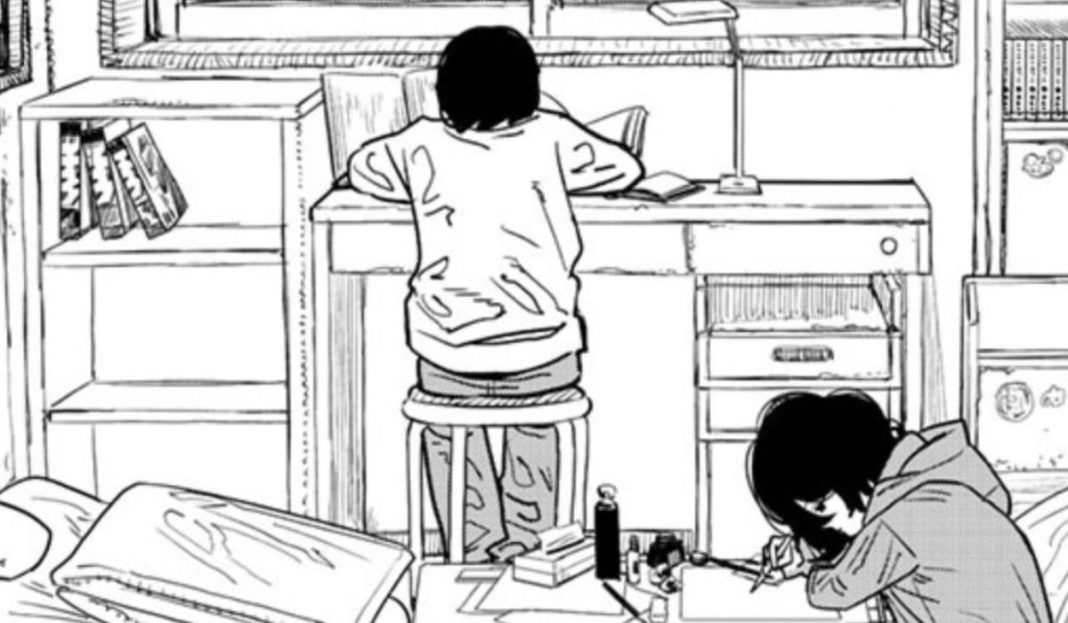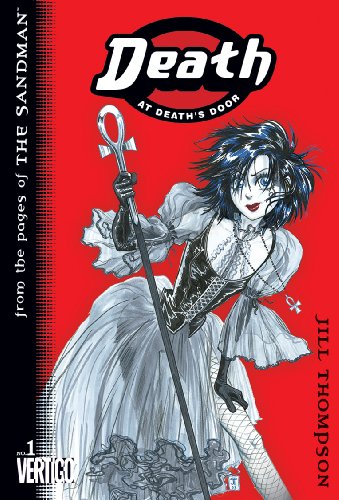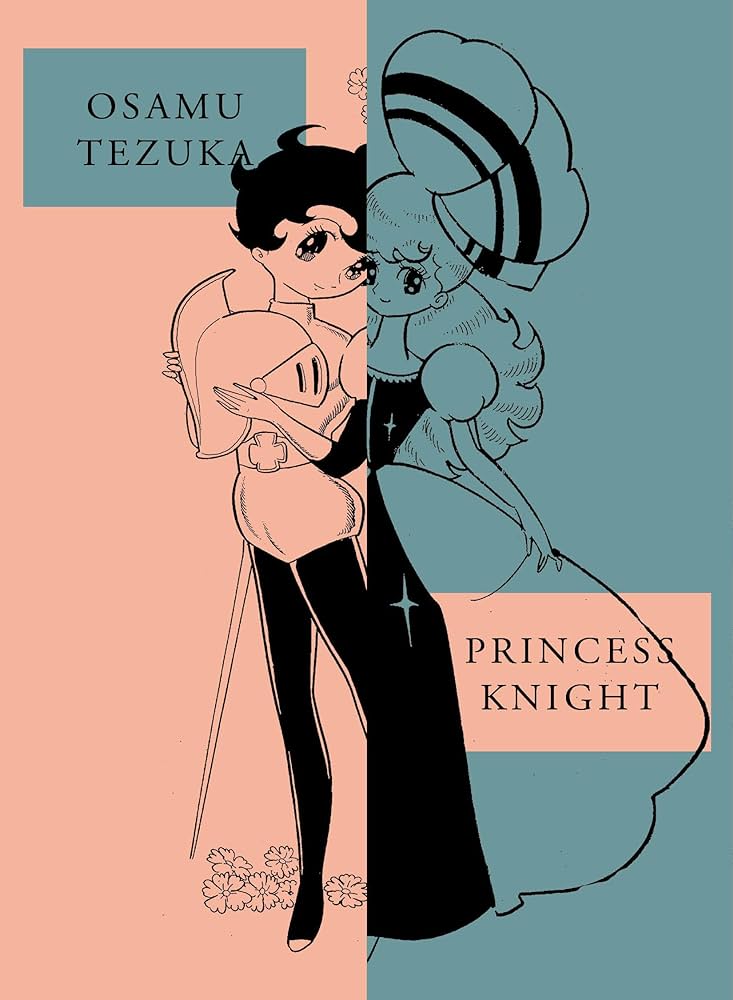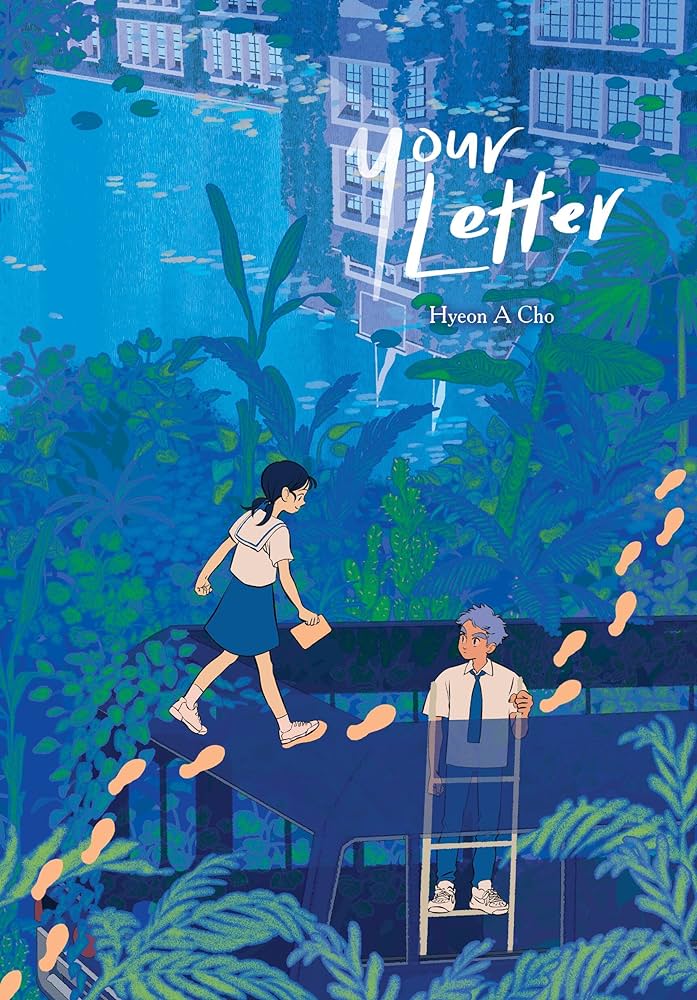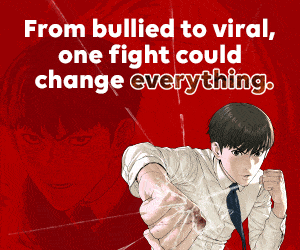There are two universal truths in today’s rapidly changing comics industry. The first is that Dog Man is the defining comic of our era. The second is that more people are reading manga and Webtoons (aka vertical scroll comics) than ever before. Therefore we at Comics Beat have chosen to embark on a new venture: Beat’s Bizarre Adventure. Every other week, we’ll have three writers recommend some of their favorite books and series from Japan, Korea and elsewhere. This week we have a quirky take on Death of the Endless, a genderfluid Princess Knight, and, of course, a scavenger hunt.
Death: At Death’s Door
Writer/Artist: Jill Thompson
Separations: Lee Loughridge
Consultant: Neil Gaiman
Publisher: Vertigo
Death: At Death’s Door is a manga-style comic penned and inked by the brilliant Jill Thompson, known for her work on Neil Gaiman‘s Sandman characters. This understated work is a humorous take on the “Season of Mists” storyline from Neil Gaiman’s acclaimed series. Charming shoujo-style character designs with gothic and perky elements reintroduce us to the beloved character Death and her whimsical family, the Endless.
As often seen in manga, the story begins with a profile of each member of the Endless. In a family meeting, Desire taunts Morpheus about Nada, a former lover he banished to Hell 10,000 years ago. As a result of Hell being emptied, the dead flood into Death’s realm, mistakenly believing they are headed to Heaven. Overwhelmed, Death rushes to manage her duties, leaving Delirium in charge.
Chaos ensues when Delirium hosts a bizarre party featuring “Horse Doovers,” a mispronunciation of hors-d’oeuvre. They are quite quirky: pencils on crackers, telephone ice cream. The situation escalates with the arrival of homeless demons from Hell. But Dream’s successful negotiations in Hell resolve the conflict, as he retrieves Nada and transfers the Key to Hell to the angels Remiel and Duma.
Death: At Death’s Door stands out as a delightful entry point into the complex world of The Sandman. Jill Thompson’s lighthearted approach makes the heavy themes of the original storyline more approachable for newcomers. It highlights Death, a fan-favorite character, in a manner that underscores her compassion and humor.
One of the comic’s greatest strengths is its unique blend of humor and gothic elements, providing a fresh perspective on familiar characters. Thompson’s shoujo-style illustrations add layers of charm, accessibility and moe. The humorous depictions of Delirium’s chaotic party and the quirky “Horse Doovers” showcase Thompson’s knack for blending the macabre with the whimsical, one of my favorite flavors.
However, the simplified storytelling may not appeal to die-hard Sandman fans that expect the depth and darkness of Gaiman’s original work. The transition from the source material’s richly layered narrative to a straightforward and humorous plot might be jarring to some.
Death: At Death’s Door offers a fresh take on Sandman lore. While it may not satisfy hardcore purist fans, its whimsical style makes it a delightful read for newcomers and for those looking to explore The Endless from a new angle. — Ilgın Side Soysal
Princess Knight
Writer/Artist: Osamu Tezuka
Translation: Maya Rosewood
Production: Hiroko Mizuno, Jill Rittymanee, Tomoe Tsutsumi
Publisher: Vertical
Back in November, the Tezuka family revealed a new AI produced chapter of Black Jack. The announcement, unsurprisingly, elicited mostly disgusted responses. Making a new Osamu Tezuka manga via AI is an exercise in futility. The God of Manga was such a singular creator and his comics reflect that. There’s nothing quite like reading a Tezuka comic, with the goofy jokes, Christian overtones and gorgeous art. Princess Knight, his influential early shoujo work, is a case in point.
Princess Knight is a pure fairy tale adventure. Inspired by the famous Takarazuka Revue, Tezuka created Sapphire, the princess of Silverland, who disguises herself as a prince. She must fend off the evil Duke Duralumin who seeks to conquer her kingdom. She also occasionally disguises herself as a common girl to adventure with Prince Franz Charming of Goldland. At other times, she dresses up as Phantom Knight to fight evils in her kingdom. It’s up to readers to decide whether Sapphire is a feminist icon or a heroine of their time. But Sapphire’s gender fluidity feels fresh almost 70 years later.
Tezuka goes to town visually on Princess Knight. Drawing from Disney’s animation and Takarazuka, every background and setting is a feast for the eyes. You want to slow down and take in the detail on every page.
This is also ground zero for the magical girl genre. From a pint-sized angel sidekick Tink to Sapphire’s many costume changes, it’s all here. Fighting evil by moonlight and winning love by day? Sapphire does it. Outside of Duralumin her foes are demonic entities and witches. Tezuka’s mixture of fairy influences and Christian ideas still hold sway in the genre. You can draw a line from this to Cutie Honey to Sailor Moon. But almost 70 years later, Princess Knight and its hero remain one of a kind. — D. Morris
Your Letter
Writer/Artist: Hyeon A Cho
Publisher: Webtoon
When middle school student Sori Lee defends her classmate from bullies, she becomes their target. She moves back to her hometown in order to escape their wrath. But the trauma she’s experienced makes it tough for her to find friends…until she finds a letter taped under her classroom desk. The letter leads her on a scavenger hunt across the school. As she makes new friends and enemies, she asks herself: who is writing these letters, and why? Are they for her, or somebody else?
Your Letter is like a message beamed from another, better universe. It wraps up in just 10 episodes rather than sprawling for hundreds like its successful WEBTOON peers. The characters are fleshed out not just through their facial expressions (which are great) but by careful attention to their hands and feet. Proper shadows and lighting create a fully realized world. It reads like a traditionally published work rather than a webcomic.
But Your Letter could only have been a Webtoon. When Sori finds the first letter, it expands to fill the vertical scroll, shifting the comic’s aesthetic into handmade papercraft. Hyeon A’s approach to characterization through body language also lends itself well to the medium’s “storyboard” construction, breaking each small movement into individual panels.
Your Letter builds to a tearjerker climax that left me thinking the author pulled their punches just a bit. I also couldn’t help but think the protagonists were a bit too nice; I would love to see a future story by Hyeon A Cho that leans into the big self-destructive emotions of middle school. But there’s something to be said for how Your Letter insists that doing the right thing is important even when it’s hard. That’s an important lesson for kids to learn.
If you’ve never read a Webtoon before, I don’t think you can find a better starting place than Your Letter. It’s like if Naoko Yamada drew a middle grade graphic novel, which is to say, it’s a masterpiece. My only regret is that I found out while writing this piece that Hyeon A Cho has an ongoing WEBTOON serial that has yet to be translated into English. It’s already twice as long as Your Letter and still going strong. Et tu, Naver? — Adam Wescott
Follow Beat’s Bizarre Adventure to get weekly manga and webtoon recommendations!



